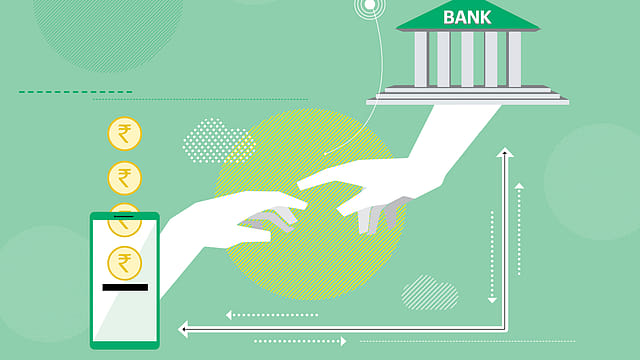Why does the future of premium banking lie in lifestyle?
ADVERTISEMENT

The future of premium banking is clearly moving towards a lifestyle-oriented, hyper-personalised, and digital-first model, wherein banks and financial institutions are prompted to seamlessly integrate themselves into the daily lives of customers with precise and highly value-added services that extend beyond conventional banking.
In the driving seat are the modern, affluent, and digital natives—the under-40, young customers who want extreme hyper-customised financial products and services that seem designed and destined to their unique needs and preferences. Being familiar with the globally prevailing personalised banking services, they expect the banks to anticipate their requirements, provide pertinent financial solutions and guidance, and deliver smooth, bespoke digital experiences.
Let us explore all the opportunities and some challenges in this high-stakes digital game for banks.
Banking-as-a-lifestyle service
Raised in a technology-swamped environment, the young customers believe that digital interactions with banks are an easy means to convey their needs, given their ‘tech-savvy, time-poor’ status. Hence, a bank that goes beyond the basic digital functionalities gets a faster preference. In response, they expect banks to present them with products and services that are pertinent to their needs and lifestyles, a broader lifestyle, and an overall improvement in their daily lives. Such customers appreciate tailored reward programmes, integration of activities such as online shopping and travel, and financial management tools within banking apps.
When compared to traditional banking, digital-led, premium banking looks at a deeper engagement with customers as against segment-related plain vanilla offers, a dynamic use of data, including behavioural analysis against the conventional banking’s CRM data methods, and a message delivery based on real-time triggers, unlike the known ways of batch communication.
December 2025
The annual Fortune 500 India list, the definitive compendium of corporate performance, is out. This year, the cumulative revenue of the Fortune 500 India companies has breached $2 trillion for the first time. Plus, find out which are the Best B-schools in India.
Deepening the digital natives’ connect
Global surveys show that the ‘unforgiving’ younger consumers expect nothing short of perfection when it comes to their online banking experiences, reiterating their willingness to switch banks if technology failures or poor and impersonal services persist. Thus, besides deeply understanding their needs, banks must also sustain robust systems, risk mitigation processes, and qualitative digital solutions to measure their expectations and retain their loyalty.
In a 2025 banking consumer study, Accenture says the absence of any connection in digital interactions is prompting customers to pursue more personalised, lifestyle banking experiences as well as to interact with various banks. They want banks to be embedded in their routines through mobile apps or other digital platforms, loading value-adds such as travel rewards, discounts, wellness benefits, and even access to curated events and experiences.
For example, a reminder for utility payment, a travel insurance or forex offers for someone traveling for work, or even an automated guidance to use a service on the apps can trigger favourable responses from young users.
Personalisation: A competitive advantage
Banks now realise that by moving beyond transactional relationships, they could build trust and brand loyalty faster than earlier generations. In the modern context, hyper-personalisation means remembering a new age customer and sharing their financial journey and life-cycle by listening to their needs, delighting them with routine and surprise services across channels, rewarding them in moments such as cashbacks and special vouchers, and reminding them how much you value their relationship. By de-jargonising the financial communication and simplifying the decision-making for them, customers would find such efforts to lessen their cognitive load, making it easier for them to act confidently.
Surveys show that the ‘right experience’ engages customers much more, helping banks generate new revenue streams through cross-selling and up-selling, service fees, and subscription models associated with lifestyle services.
Challenges to improve on the inside, outside
Among the key challenges will be the consistent need to be digitally efficient in terms of investment in technology and delivery of services. From here on, banks would not be able to take their eyes off the ball unless they want to be hit. Choosing the right technology and mastering it will be another ongoing task. Adapting AI, big data, and machine learning is crucial for the acute personalisation of the overall banking experience, while roping in the right partners is equally imperative for leading the open banking opportunities, gaining a goldmine of insights and data points.
Thus, updating the core banking systems into a platform that gives a more modern and unified view of customer activities with real-time insights would be time-critical. Then comes the need to be regulatory compliant, as well as to incorporate the laws that protect private data usage. Importantly, a holistic mindset shift—from product-centric to one of customer centricity—especially among the core staff, would be a key success factor.
Given the aggressive competition from fintechs who thrive on a focussed customer service and personalisation as a USP, banks will have to seek deeper insights to offer a consistent and personalised experience across all channels, including online, mobile, and in-person interactions.
The evolution of premium lifestyle banking will be influenced by individuals who prioritise convenience and personalisation, alongside a clear understanding of financial management and wellness. By adopting a customer-focussed strategy, merging financial and non-financial services, and utilising technology, banks can foster authentic advocacy to strengthen customer relationships, boost revenue growth, and encourage enduring value. This approach will lead to meaningful and lasting relationships with their clients.
(The author is head-products, consumer bank at Kotak Mahindra Bank. Views are personal.)
